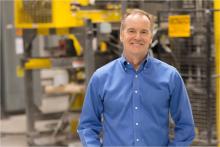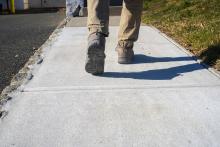Test results released in a white paper by Solidia Technologies are said to show that a new technology that cures concrete using carbon dioxide instead of water reduces the carbon footprint of cement and concrete up to 70% and produces higher-performing concrete products while using the same raw materials and equipment as traditional concretes.
Adaptable to a wide variety of cement and concrete formulations, production methods and product specifications, Solidia Concrete is said to offer ordinary Portland cement and concrete manufacturers a sustainable and performance-enhancing, competitive alternative.
The results were detailed in the Solidia Concrete white paper, the second of a two-part series. The companion paper on Solidia Cement was released in December 2013.
The white paper was co-authored by Solidia Technologies’ Senior Research Scientist Jitendra Jain, Ph.D., Research Scientist, Omkar Deo, Ph.D., Principal Scientist Sada Sahu, Ph.D., and Chief Technology Officer Nicholas DeCristofaro, Ph.D.
An abstract from the paper says that Solidia Concrete is a new,
Solidia Cement, a requisite ingredient in the formulation of Solidia Concrete products, is composed primarily of low-lime containing calcium silicate phases. The curing of concrete products made using Solidia Cement is derived from a reaction between low-lime calcium silicate phases and gaseous carbon dioxide (CO2) in the presence of moisture. During the carbonation curing process, calcite (CaCO3) and silica gel (SiO2) are formed and are responsible for the development of strength within the concrete. This is in contrast to the hydration process occurring in Portland cement-based concrete, which involves the hydration reaction between high-lime calcium silicate phases and water to form calcium-silicate-hydrate gel and calcium hydroxide.
“Solidia Concrete contains the same raw materials as those used in concrete products made with ordinary Portland cement (OPC), namely, fine and coarse aggregate, supplementary cementitious materials, and chemical admixtures. In addition, the manufacturing of Solidia Concrete products is performed using identical mixing and forming processes as those adopted in OPC-based concrete production.
“The curing process of concrete made using Solidia Cement sequesters up to 300kg of CO2 per tonne [all calculations are based on the tonne, also known as the metric ton, equalling 1,000kg] of cement used. When the reduced CO2 emissions associated with Solidia Cement production are considered along with the ability of that cement to sequester CO2 during concrete curing, the CO2 footprint associated with the manufacturing and use of cement can be reduced by up to 70% compared to OPC.
“Solidia Concrete can be produced by manufacturers of traditional concretes and can be designed to address virtually any precast concrete application. These products, which include paving stones, concrete blocks, railroad ties, roof tiles, and pervious concrete, match or exceed the properties and characteristics of concrete products made using OPC. Additionally, the Solidia Concrete curing process can be completed in a matter of hours, allowing for rapid deployment. As water is not consumed during the Solidia Concrete curing process, it can be collected and reused, with recycle rates in excess of 60%, and potentially as high as 100%,” says the abstract.
Dr. DeCristofaro says: “For over 50 years, scientists have tried to cure concrete with CO2 knowing the resulting product would be stronger and more stable. By making our technology affordable and easy to adopt, Solidia Technologies has advanced the commercial viability of CO2-cured cement and concrete. Our current focus is testing additional applications with an even wider variety of concrete formulations and manufacture methods to facilitate adoption across the globe.”
Solidia’s ongoing technology and product development is reinforced by third-party research collaboration and testing, including research in concrete applications with
A winner of the 2013 R&D Top 100 Award and shortlisted for the 2013 Cleantech 100, Solidia’s investors include Kleiner Perkins Caufield & Byers; Bright Capital;, BASF and BP.






